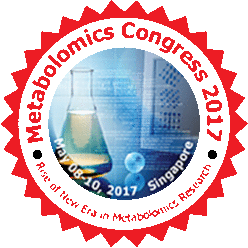Kieu Oanh Nguyen T
University of Science and Technology of Hanoi, Vietnam
Title: A computed biochemical conversion network revealed a broad spectrum of hydroxycinnamic acid ester conjugates of glucaric acid in Isatis tinctoria leaves
Biography
Biography: Kieu Oanh Nguyen T
Abstract
Isatis tinctoria is a plant species belonging to the Brassicaceae family that is known as an ancient source of indigo dye and as a medicinal plant with high industrial potential. Although a large comprehensive metabolite profiling of the bio-active dried leaf extracts has been reported, metabolite profiling of Isatis fresh leaves focused up to today on glucosinolates and flavonoids. We profiled here the methanol extracts of I. tinctoria fresh leaf extracts in an untargeted way and aimed especially to detect as yet unidentified compounds. Therefore, an algorithm was adopted in which liquid chromatography-mass spectrometry profiles are searched for pairs of peaks that have mass and retention time differences corresponding with those of substrates and products from well-known biochemical conversions. We then concatenated these peak pairs into a network where the nodes represent metabolites and edges represent biochemical conversions. Starting from known network nodes, following the edges of the network allowed the characterization of adjacent network nodes, leading to their structure. This high-throughput cheminformatics procedure allowed the characterization of the structures of a wide spectrum of hydroxycinnamic acid esters. Besides the sinapate esters of malate, glucose and gentiobiose, which are typical for brassicaceous plants, these conjugates comprised a large variety of glucaric acid esters which have not been reported in plants before. This untargeted approach suggests the existence of an as yet unknown acyltransferase activity in Isatis tinctoria rosette leaves.

